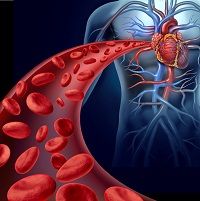Insulin Resistance Higher in Rheumatoid Arthritis Patients
The increased insulin resistance seen in rheumatoid arthritis (RA) patients compared to non-RA controls did not contribute to additional atherosclerosis risk, according to research published in Arthritis & Rheumatology.

Insulin resistance was higher in rheumatoid arthritis (RA) patients than in non-RA controls, though higher levels did not pile on additional atherosclerosis risk, according to research published in Arthritis & Rheumatology.
A multifaceted team of researchers examined 195 RA patients and 198 non RA controls in order to explore the prevalence of IR in the 2 populations and determine whether the associations or IR with measures of atherosclerosis differ between the groups. The researchers commented that systemic inflammation and IR are linked, however the determinants of IR and its impact on atherosclerosis in RA patients are not at all understood. The investigators quantified IR using the homeostatic model assessment of IR (HOMA IR), and compared the RA patients and the non RA demographically matched controls.
The differences in the associations between the HOMA IR index and the Agatston coronary artery calcium (CAC) score, ultrasound determined intima media thickness (IMT) of the common carotid artery (CCA) and internal carotid artery (ICA), and focal plaque in the ICA/ carotid blub were compared according to RA status, the researchers explained.
The average HOMA IR levels were higher in the RA group by 31 percent compared to the non RA controls. The RA group demonstrated consistently higher HOMA IR levels regardless of demographics or cardiometabolic risk factors the researchers did sub analyses on.
The control group showed strong and significant associations between the HOMA IR index and the C reactive protein (CRP) and interleukin 6 (IL 6) levels. This association was weaker in the RA patient cohort.
For the RA patients, higher HOMA IR levels were linked to rheumatoid factor (RF) seropositivity in men and women, and prednisone use in the women from the RA population.
Before adjustments for various other risk factors, HOMA IR levels in the control group were linked to all measures of sub-clinical atherosclerosis; after adjustment for cardiovascular risk factors, the associations were reduced and lost statistical significance.
The RA patients showed neither significantly associated baseline nor average HOMA IR levels with any change of the atherosclerosis measures over the duration of the follow up period, which was 3.2 years on average.
“Although IR was higher in RA patients than in non-RA controls, higher levels may not independently impart additional risk of atherosclerosis,” the authors concluded.